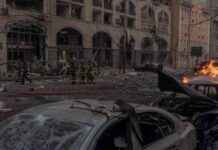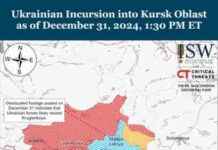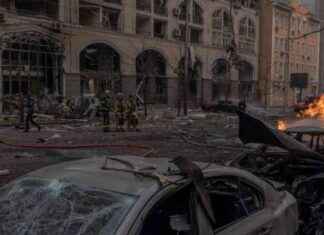Russian Drone Attack in Kyiv Unleashes Fragmentation Warheads
In a shocking escalation of tactics, Russia reportedly deployed drones armed with fragmentation warheads during an attack on Kyiv on Wednesday. Fragmentation warheads, designed to disperse ball bearings or other materials upon detonation, unleash high-velocity shrapnel that can cause widespread damage across a targeted area.
Witnesses on the ground, including Ruslan Kandybor, the director of the transport infrastructure for the Kyiv City State Administration, described the aftermath of the attack on local television channel Kyiv24. Kandybor expressed grave concern over the use of fragmentation warheads, noting that the city’s metro system had suffered significant damage from drone debris.
“The enemy is conducting insidious attacks, loading the ‘Shaheds’ with shrapnel – small fragments,” Kandybor stated. “And we can see this already from the scene of the events, where everything around is cut up with small metal fragments.” He went on to highlight the potential for injuries had there been movement in the vicinity during the attack, emphasizing the risk posed to civilians.
Kyiv’s mayor, Vitali Klitschko, took to social media to provide updates on the situation. He initially reported that drone debris had fallen near a metro station in the city’s Darnytskyi district, causing damage to the fence and a separate building at the Darnytsia transit depot. Subsequent reports indicated that local air defense measures were activated, with additional damages in the city’s Desnyanskyi district also being documented.
The deployment of fragmentation warheads by Russian drones marks a troubling development in the ongoing conflict. Just months prior, in November 2024, Russia had reportedly outfitted its drones with thermobaric warheads, also known as aerosol or vacuum bombs. These devastating munitions create a massive fireball upon detonation, generating blast overpressure and extreme temperatures that can wreak havoc on both fortified structures and soft targets.
As the situation in Kyiv continues to unfold, the use of such advanced weaponry raises concerns about the escalating violence and the toll it may take on civilians caught in the crossfire. The need for international intervention and de-escalation efforts becomes increasingly urgent as the conflict intensifies.
Expert Analysis: Strategic Implications of Drone Warfare
Military experts have long warned about the potential dangers of drone warfare, particularly in the hands of adversaries willing to push the boundaries of conventional warfare. The ability to remotely deploy lethal payloads with precision and speed poses a significant challenge for defense systems designed to counter such threats.
According to defense analysts, the use of fragmentation warheads by Russian drones underscores the evolving nature of modern warfare and the need for robust countermeasures to protect civilian populations. As drones become increasingly integrated into military operations, the risk of collateral damage and civilian casualties rises, necessitating new strategies for mitigating these risks.
Looking Ahead: The Road to De-Escalation
As the conflict in Ukraine enters a critical phase, the international community faces a pressing need to address the root causes of the crisis and chart a path towards de-escalation. Diplomatic efforts, economic sanctions, and humanitarian aid all play crucial roles in shaping the trajectory of the conflict and preventing further escalation.
The use of advanced weaponry like fragmentation warheads in urban areas underscores the urgency of finding peaceful solutions to the conflict. The toll on civilian lives and infrastructure demands a concerted international response to safeguard the people of Ukraine and prevent further devastation. As the world watches the events unfolding in Kyiv, the need for unity, compassion, and a commitment to peace has never been more apparent.

















